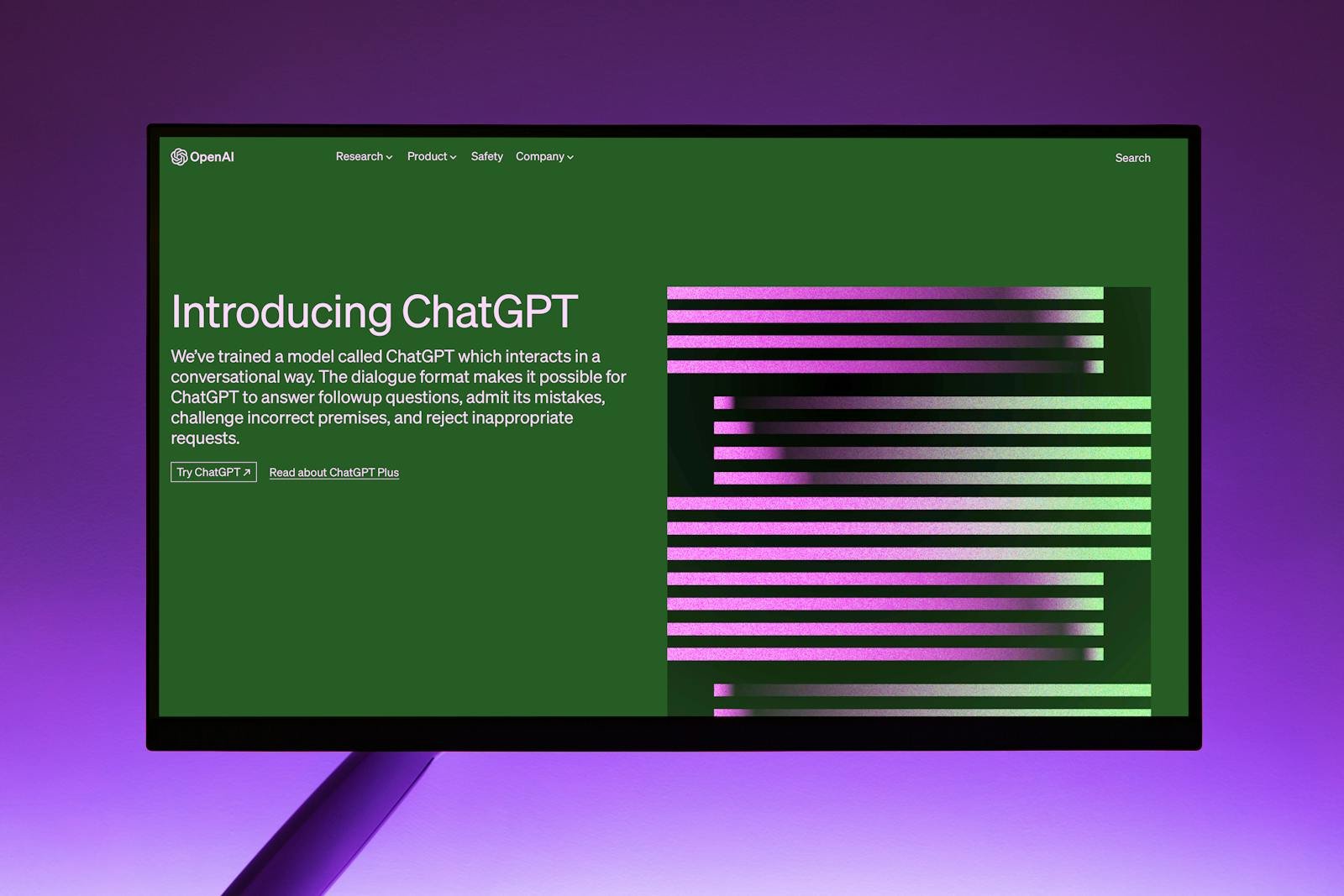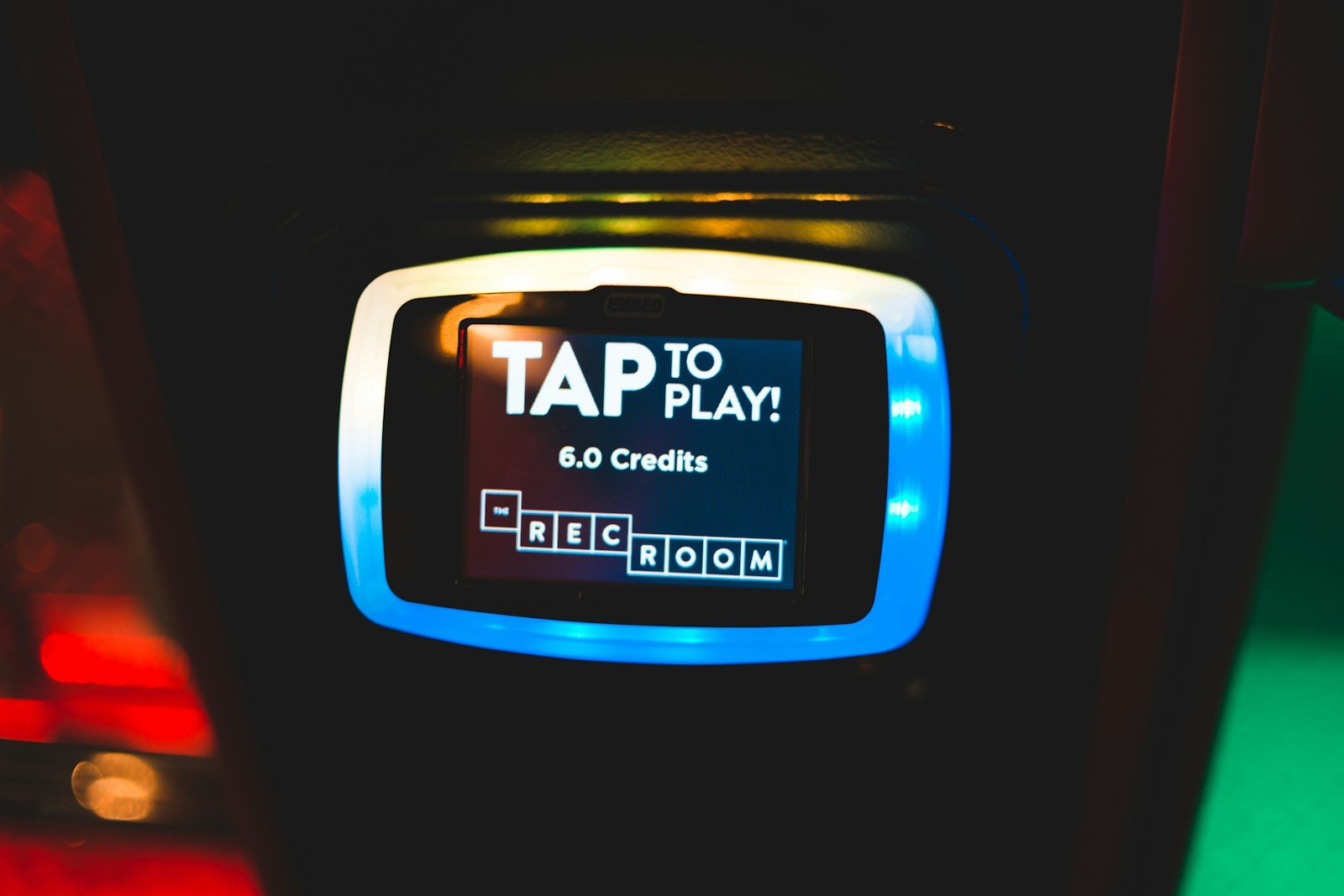
Introduction to ChatGPT-5
ChatGPT-5 represents a significant milestone in the evolution of artificial intelligence language models developed by OpenAI. It builds upon the foundational principles established by its predecessors, incorporating advanced features designed to enhance user engagement and improve overall performance. The anticipation regarding ChatGPT-5 has been palpable within the AI community, as it promises to surpass the capabilities of earlier versions, such as ChatGPT-4, by offering a more nuanced understanding of context and a broader range of knowledge.
The development of ChatGPT-5 comes in response to the growing demand for more sophisticated AI tools that can effectively engage in human-like conversations. Recent advancements in natural language processing and machine learning have allowed for deeper insights into user queries, resulting in an AI that is not only more responsive but also more relevant in conversations. This evolution is crucial, as it addresses limitations seen in earlier models, particularly in areas such as coherence, contextual awareness, and the ability to maintain engaging dialogues over extended interactions.
One of the key highlights of ChatGPT-5 is its enhanced ability to generate creative content while adhering to user-defined constraints. This improvement opens new avenues for applications across various domains, including education, entertainment, and professional writing, enabling users to harness the capabilities of AI in innovative ways. The excitement surrounding the release of ChatGPT-5 signals a forward leap in AI technology, as it positions itself to reshape how individuals and businesses interact with language models. As we explore its features and functionalities further, it is essential to understand not only what ChatGPT-5 can do but also the implications of its advancements for the future of AI language models.
Is ChatGPT-5 Free to Use?
As one of the latest advancements in artificial intelligence, ChatGPT-5 has garnered significant attention regarding its accessibility and cost structure. Users often seek clarification on whether they can leverage this innovative tool for free or if they need to subscribe to a paid model to access its full capabilities. Understanding the pricing framework surrounding ChatGPT-5 is crucial for both individuals and businesses contemplating its adoption.
ChatGPT-5, similar to its predecessors, offers a mix of free and paid usage options. The free version allows users to engage with the model for basic tasks, which is particularly appealing for those who wish to explore its functionalities without financial commitment. However, this free access comes with limitations, such as reduced processing speed and restrictions on the number of queries that can be made within a given timeframe. Users looking for comprehensive features and enhanced performance may find these limitations restrictive.
On the other hand, the subscription-based model, generally known as ChatGPT Plus, provides a more robust experience. Subscribers enjoy several advantages, including priority access during peak times, faster response rates, and a higher allowance of queries. This tier aims to cater to users requiring extensive interaction with ChatGPT-5 or those utilizing it for professional purposes, offering an attractive solution for businesses seeking seamless integration of AI capabilities in their operations.
In comparison to earlier versions such as ChatGPT-3 and ChatGPT-4, the current pricing structure reflects a trend towards a freemium model, where essential features remain accessible for free while advanced capabilities are reserved for paying customers. Hence, while significant functionality is available at no cost, users desiring a more optimized experience will likely consider the advantages of a subscription.
What’s New in ChatGPT-5?
ChatGPT-5 introduces a plethora of enhancements and new features that significantly refine user experience and interaction quality compared to its predecessors. One of the most critical upgrades is its language understanding capabilities, which have seen a substantial boost through advanced training algorithms and a more comprehensive data set. This allows users to engage with ChatGPT-5 in a more fluid and intuitive manner, making conversations feel more natural and coherent.
Moreover, ChatGPT-5 employs a refined context management system that enables it to maintain the thread of conversation over longer interactions. This means users can expect more relevant and context-aware responses, reducing instances of miscommunication or off-topic replies. The model’s ability to understand nuanced queries and provide precise answers is enhanced, thereby catering to a wider array of topics and inquiries.
Another significant enhancement is the quality of the output itself. ChatGPT-5 generates responses that are not only contextually appropriate but also more informative and insightful. The integration of advanced techniques in response generation leads to richer interactions, with the AI providing not just answers but also offering explanations and elaborations when needed. This improvement is particularly beneficial for users seeking detailed information or engaging in complex discussions.
Additionally, ChatGPT-5 has introduced new functionalities, such as customizable persona settings, which allow users to define the tone and style of responses they prefer. This feature empowers users to tailor interactions according to their specific needs, whether they require straightforward information, casual conversation, or professional dialogue.
In summary, the advancements in language understanding, user interaction, and response quality set ChatGPT-5 apart, making it a more robust tool for communication. The new capabilities enhance the overall user experience, positioning ChatGPT-5 as a leader in AI-driven conversational agents.
Capabilities of ChatGPT-5
ChatGPT-5 showcases a multitude of capabilities, making it a versatile tool across various domains. One of its primary functions is facilitating conversations, whereby it mimics human-like interactions. This is enhanced through advanced natural language processing, allowing it to understand context, follow-up questions, and maintain coherence in dialogue. Such conversational abilities are invaluable in customer service applications, where swift and accurate responses are critical. Businesses can incorporate ChatGPT-5 into their workflows to enhance customer engagement, reduce response times, and alleviate the workload on human agents.
Moreover, ChatGPT-5 excels in content generation, which can serve a range of industries. Whether it’s drafting articles, creating marketing material, or generating creative writing, the model’s proficiency in generating meaningful, context-aware text is remarkable. This capability makes it an essential asset for content creators who seek to produce high-quality material efficiently. Its ability to engage in creative endeavors, such as storytelling or poetry, also positions it as a potential collaborator for writers and artists alike.
In educational contexts, ChatGPT-5 can act as a tutor or learning assistant, capable of providing explanations, answering questions, and assisting with homework in various subjects. This feature enhances learning experiences by offering immediate support to students, allowing them to grasp complex topics with ease. Furthermore, professionals in training and continuous education can benefit from personalized guidance, feedback, and resources tailored to their individual learning paths.
Overall, the capabilities of ChatGPT-5 extend beyond simple text generation, showcasing its adaptability in roles such as conversational agent, content generator, and educational tool. Its multifaceted nature empowers users, fostering greater creativity and efficiency across multiple sectors. This versatility positions ChatGPT-5 as a game-changer in the realm of artificial intelligence applications.
Comparing GPT-5 with GPT-4
The advancement from GPT-4 to GPT-5 represents a significant leap in the capabilities of natural language processing technologies. With an emphasis on improving performance metrics, user experience, and functionality, GPT-5 has introduced notable enhancements. These advancements can be observed in several key areas, including contextual understanding, user responsiveness, and task execution accuracy.
One of the foremost improvements seen in GPT-5 is its ability to interpret and generate more contextually appropriate responses. Users have reported that GPT-5 demonstrates a markedly superior understanding of nuanced queries, enabling it to produce answers that are not only relevant but also reflect a deeper grasp of the underlying themes in conversations. This has been particularly beneficial in complex dialogue scenarios where nuance plays a critical role.
Performance metrics quantify these enhancements as well. Benchmarks reveal that GPT-5 outperformed GPT-4 in various standardized text comprehension and generation tasks. For instance, in creative writing tasks, GPT-5 exhibits greater coherence and original thought, which has expanded its utility in fields like content creation, education, and entertainment.
User experiences indicate that GPT-5 is more adaptive in learning from interactions. Unlike its predecessor, GPT-4, which had limitations in retaining context over extended dialogues, GPT-5 seamlessly integrates previous interactions to foster more meaningful conversations. This refinement diminishes instances of repetitiveness in responses and amplifies engagement, leading to a more fluid user experience.
Specific examples of enhanced tasks include improved summarization of lengthy articles and more precise translation capabilities, which have become critical needs in our globalized environment. The fine-tuning processes applied to GPT-5 have refined its ability to summarize content accurately, thereby saving users time and enhancing comprehension in professional and academic settings.
These collective enhancements highlight the progress achieved from GPT-4 to GPT-5, reinforcing the latter’s position as a more powerful tool in the ever-evolving landscape of artificial intelligence communication.
User Feedback on ChatGPT-5
Since its release, ChatGPT-5 has garnered substantial attention from users worldwide, generating a mix of feedback that highlights both its strengths and shortcomings. Many users have expressed appreciation for the improved conversational abilities and the enhanced context-awareness that ChatGPT-5 offers compared to its predecessors. This advancement allows for more meaningful and coherent interactions, which many users find beneficial, especially in applications such as tutoring, content creation, and customer support.
Moreover, the model’s capacity to understand and generate more complex queries has left a positive impact on users who seek detailed and informative responses. It is particularly noted for its versatility in various domains, ranging from technical assistance to creative writing. Users have remarked on its ability to produce contextually relevant suggestions and respond with greater nuance, showcasing significant improvements in the naturalness of its dialogue.
However, despite the favorable feedback, some criticisms have surfaced. A segment of users has reported instances of inaccuracies in the information provided, particularly for specific, nuanced topics. This has raised concerns about reliability, especially among professionals who rely on accurate data for decision-making. Additionally, issues relating to the handling of sensitive content and the potential for biased responses have been topics of discussion. Users emphasize the need for ongoing refinement in these areas to ensure that ChatGPT-5 can serve widely varied audiences without compromising quality or ethical standards.
Overall, user experiences with ChatGPT-5 illustrate a balance between excitement for the enhanced features it offers and the recognition of its limitations. The dialogue surrounding its use reflects a community eager to see continual improvements and adaptability in future iterations, positioning ChatGPT-5 as a significant player in the evolving landscape of AI-driven conversation tools.
Potential Applications for ChatGPT-5
ChatGPT-5 presents exciting opportunities across various sectors, reflecting its versatile capabilities. In the business domain, organizations can leverage ChatGPT-5 to enhance customer service through intelligent chatbots and virtual assistants. These AI-driven tools can engage with customers, answering inquiries and resolving issues in real-time, thus improving overall customer satisfaction. Businesses can also utilize ChatGPT-5 for generating content, streamlining marketing efforts, and creating personalized communication strategies. This may result in improved brand engagement and increased sales conversions.
In the field of education, ChatGPT-5 holds promise for enriching the learning experience. It can provide personalized tutoring, offering students immediate assistance on topics ranging from mathematics to literature. Moreover, educators can use this AI model to develop tailored lesson plans or create interactive learning materials that cater to diverse learning styles. This capacity for individualized support makes ChatGPT-5 an invaluable resource in both traditional schools and online learning environments.
Healthcare professionals can also benefit significantly from the implementation of ChatGPT-5. This technology can assist in patient management by streamlining appointment scheduling and providing patients with essential health information. Additionally, the model can aid healthcare providers in maintaining accurate medical records and generating reports swiftly, thus allowing staff to focus more on patient care than administrative tasks. ChatGPT-5’s ability to analyze and synthesize data could also facilitate clinical decision-making, improving patient outcomes.
Finally, in the realm of entertainment, ChatGPT-5 can be employed to create interactive storytelling experiences, wherein users can engage with narratives in a dynamic manner. This not only promotes creativity but also appeals to a broad audience. The capacity for generating unique dialogue and plotlines positions ChatGPT-5 as a valuable tool for game developers and writers alike, expanding the possibilities of immersive entertainment experiences.
The Future of ChatGPT-5 and AI Language Models
The landscape of artificial intelligence, particularly with regard to language models, is rapidly evolving. ChatGPT-5 is expected to play a critical role in shaping the future of AI-human interactions. One notable trend is the integration of more personalized and context-aware responses. Future iterations of ChatGPT will likely incorporate deeper understanding of user preferences and situational contexts, thereby enhancing communication and fostering more meaningful exchanges.
Moreover, advancements in multi-modal capabilities are anticipated. This means that ChatGPT-5 and future models could not only excel in text but also integrate visual, auditory, and possibly sensory data, allowing for a richer interaction experience. For instance, users could engage with the AI through images, sounds, or even tactile feedback, creating a more immersive form of dialogue and learning.
Ethical considerations and regulatory frameworks are also expected to evolve alongside these technological advancements. With increased capabilities comes the responsibility to address privacy concerns, misinformation, and bias within AI outputs. Future AI language models will need to incorporate robust mechanisms for accountability and ethical compliance, ensuring that they serve society positively while minimizing risks. Developers must tread carefully in the deployment of these technologies to maintain public trust.
As ChatGPT-5 continues to evolve, the shift towards adaptive learning mechanisms is likely to become prominent. This means that the model could learn from real-time interactions, continually refining its abilities. Additionally, collaboration between AI models and humans may transcend current boundaries, encouraging cooperative problem-solving and decision-making. Ultimately, while ChatGPT-5 is poised to revolutionize communication and information processing, its implications for society will depend heavily on the manner and environment in which these technologies are embraced.
Conclusion: Embracing the New Era of AI with ChatGPT-5
As we conclude our exploration of ChatGPT-5, it is evident that we are witnessing a significant milestone in the evolution of artificial intelligence technology. This advanced model reflects the rapid progression in natural language processing, demonstrating remarkable improvements in terms of understanding context, generating relevant responses, and engaging in more meaningful interactions with users. The enhancements brought forth by ChatGPT-5 not only showcase advancements in AI capabilities but also open new avenues for application across various industries.
While the excitement surrounding ChatGPT-5 and its innovative features is palpable, it is equally important to approach this technology with a balanced mindset. Users are encouraged to explore the capabilities of ChatGPT-5, utilizing its functionality for personal, academic, or professional purposes. However, awareness of the limitations inherent to AI models is critical. These systems, although sophisticated, are not infallible; they can produce inaccuracies, misunderstand user intent, or generate responses lacking in nuance.
Embracing ChatGPT-5 means welcoming the positive possibilities it brings while remaining mindful of the ethical implications and the potential biases embedded within AI systems. As we venture further into this new era of AI, fostering a culture of responsible usage and critical thinking will be essential for maximizing the benefits of these advances while minimizing risks.
In essence, ChatGPT-5 stands as a testament to what contemporary AI research can achieve, making it an invaluable tool for those willing to harness its capabilities. The future of artificial intelligence promises to be both exciting and challenging, and by engaging thoughtfully with tools like ChatGPT-5, we are not just observers but active participants in shaping the unfolding narrative of technology.








